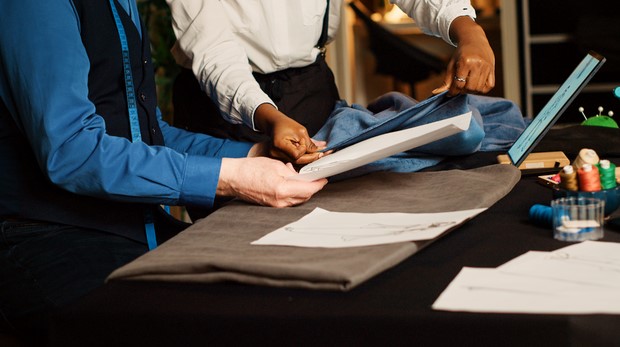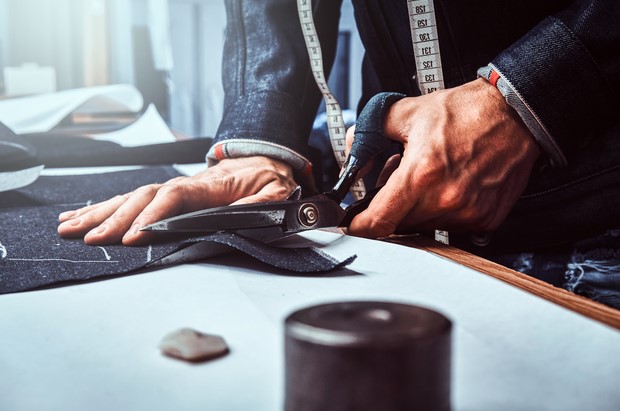Men’s fashion has quietly revolutionized itself over recent years, making the old belief about women having exclusive fashion variety seem outdated. What used to be a limited category filled with rigid dress codes has evolved into a space of personal style and expression for men.
Men’s wedding blazers can now double up for a weekend dinner. A formal shirt-and-pants set for men can be remixed into something creative, sharp, and comfortable. Blazers, suits and waistcoats are no longer just reserved for formal occasions but are now a part of everyday style for the modern man.
Why a Checklist Matters

This shift has made formalwear more accessible and adaptable. No longer just for the elite or strictly professional settings, formal men’s wear is now textured, patterned, and stylish enough to bridge the gap between business and leisure. But with this newfound variety comes a new challenge: how do you build a wardrobe that feels versatile, complete, and true to your style?
Whether you’re stepping into formals for the first time or giving your wardrobe a sharper edge, here’s a practical, no-fuss checklist that makes dressing well feel less like a chore and more like second nature.
- Look for Materials That Work for You
Focus on fabrics that deliver comfort, durability, and sharp presentation. In India’s climate, breathable materials like cotton and cotton blends are essential for staying confident during long interviews or meetings.
For trousers, wool blends or premium polyester hold their shape beautifully while giving you that professional silhouette. For shirts, choose lightweight cotton-rich fabrics that breathe well and always look polished. The right fabric means your clothes work with you, not against you, especially when it matters most.
- The Four-Piece Foundation
Start with the essentials: a well-cut blazer, a crisp dress shirt, tailored trousers, and high-quality shoes. Choose versatile colors like navy, charcoal, white, and black. These four pieces alone can be mixed and matched into 15+outfitcombinations.
Pair the blazer with jeans for a smart-casual look, or match the trousers with a polo for something semi-formal. Combine all four for a polished formal interview look for men. This foundation eliminates the “nothing to wear” dilemma and ensures that every piece you own works harder for you.
- The One-Blazer Wonder
A quality blazer instantly sharpens your appearance. It transforms a simple look into something that is appropriate for interviews, makes you a standout guest at weddings, and works equally well for dinner outings.
The key is fit. A well-tailored blazer can be styled in countless ways, and one that fits perfectly will always outperform several that don’t. If you’re investing in just one, go for a structured, single-breasted men’s blazer in navy or charcoal.
- Essential Suit Lineup: Colors and Patterns That Work
A perfectly fitted suit with a clean, coordinated shirt always makes a stronger impression than mismatched patterns. Build a wardrobe with 2–3 well-fitted suits: navy, charcoal, and mid-gray. Pair with crisp white or light blue shirts, plus one patterned option, think thin stripes, subtle checks, or faint herringbone. Each suit has a purpose: navy conveys reliability, charcoal commands authority, and mid-gray adds modern sophistication.
The golden rule: keep shirt patterns smaller and more subdued than any suit pattern, and ensure colors harmonize rather than clash.
- The After-Hours Edit: Party-Ready Suits
When the sun goes down, your wardrobe should still deliver. Party suits for men give you a break from corporate formality while keeping you sharp. Look for modern cuts in midnight blue, subtle patterns, textured weaves, or fabrics with a soft sheen. These details photograph well and help you stand out without being flashy.
Boardroom suits follow the rules, but party-ready suits for men break them, perfect for birthdays, soirées, and stylish nights out.
- The Tailoring Rules That Make Allthe Difference
No matter how expensive your clothes are, if the fit is off, it shows. When it comes to tailoring, some rules are non-negotiable:
- Shoulder seams should align perfectly with your natural shoulder.
- Trousers should fall just at the ankle with a slight break.
- Sleeves should allow a quarter-inch of your shirt cuff to peek through.
- Waistbands should sit comfortably at your natural waist, not too high, not too low.
A great tailor is your secret weapon. Even an off-the-rack suit can look custom-made with a few precise alterations. And remember: a perfectly fitting suit at any price point will always look better than an expensive one that doesn’t sit right.
Expert Guidelines from Siyaram’s
Quality formal wear is an investment; protect it with professional care techniques. Proper maintenance can extend your garments’ lifespan by 3-5 years and keep them looking showroom-fresh.
Smart Care Strategy: Wash dress shirts after every 2-3 wears using cold water and gentle detergents to prevent fabric breakdown and color fading. Always hang-dry when possible; heat damages fibers and causes shrinkage. For wool-blend trousers, dry cleaning every 4-5 wears maintains their structure and removes deep-seated odors that regular washing can’t eliminate.
The Professional Edge: Iron shirts while slightly damp for easier pressing and sharper creases. Invest in quality wooden hangers; they maintain shoulder shape and prevent fabric stress. Rotate
your suits to allow fabrics to recover between wears. These techniques aren’t just maintenance; they’re style insurance that keeps you looking polished when opportunities arise unexpectedly.
Build your Wardrobe Smartly
Begin with your core essentials. Make tailoring a priority, not an afterthought. Gradually introduce variety like shirts in different fabrics, suits in modern silhouettes, and blazers that can be styled multiple ways. The more thoughtful your choices, the more effortless your style becomes. Your wardrobe is a reflection of your journey, your values, and your confidence. Build it wisely and let it speak volumes.
The difference between being dressed and well-dressed is often in the smallest details, a cuff that peeks out, trousers that fall just right, and shoulders that align cleanly. Now that you’ve got the checklist, the guesswork is over.

